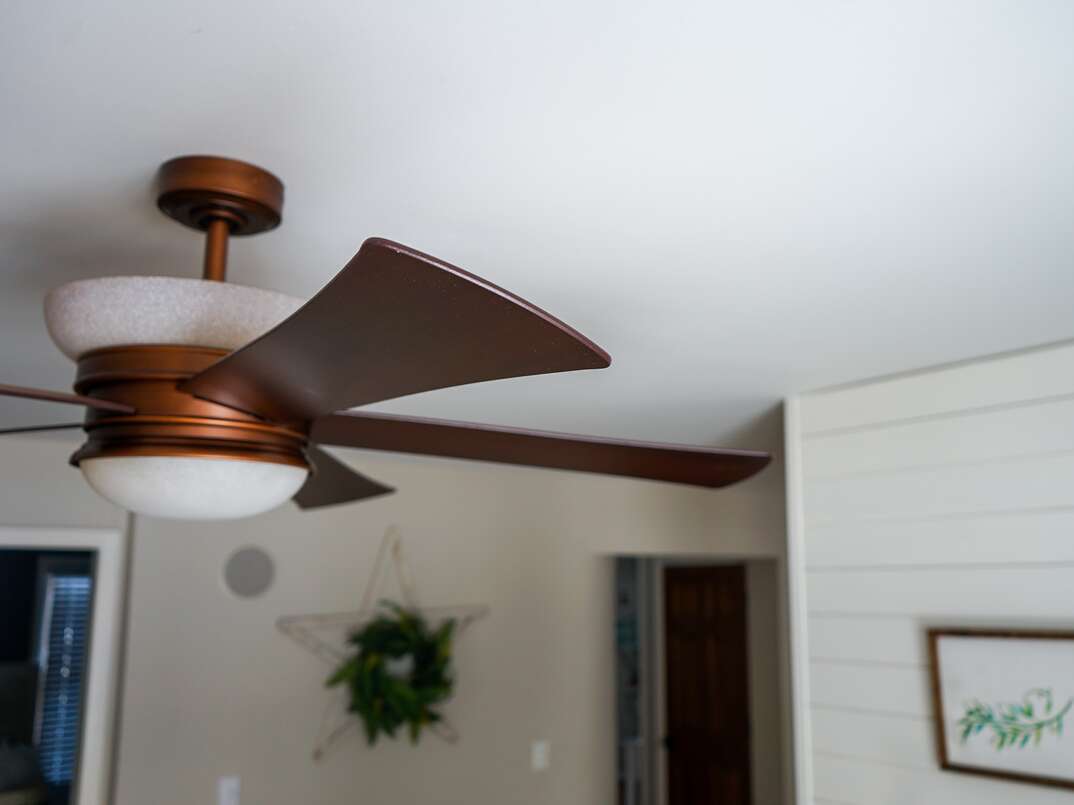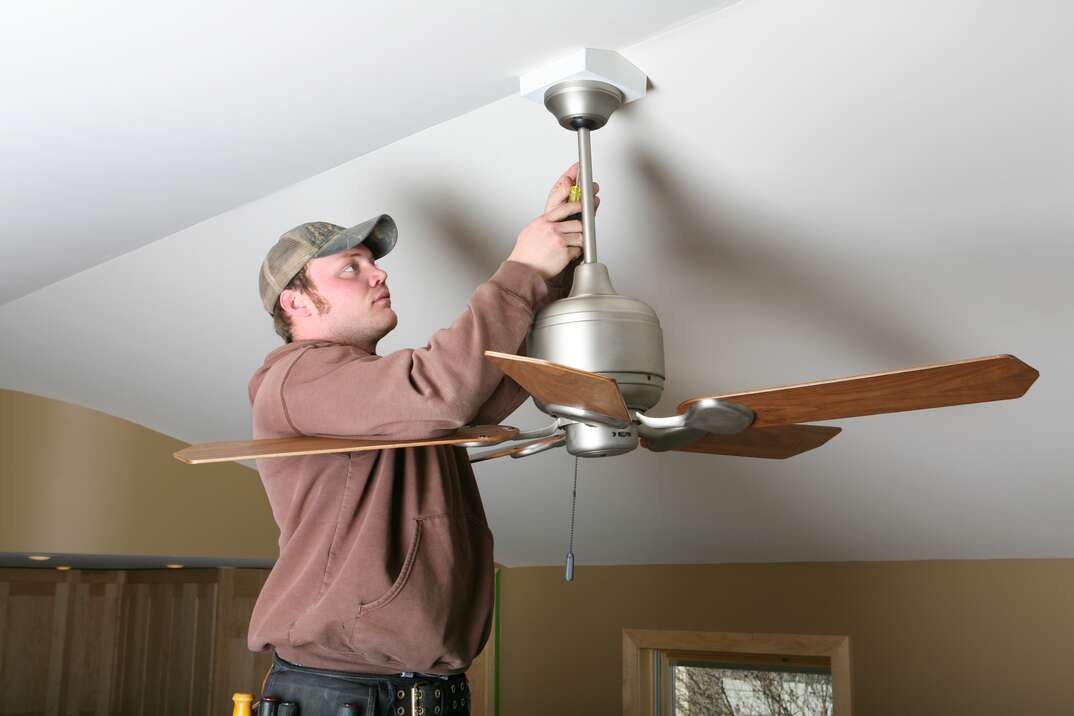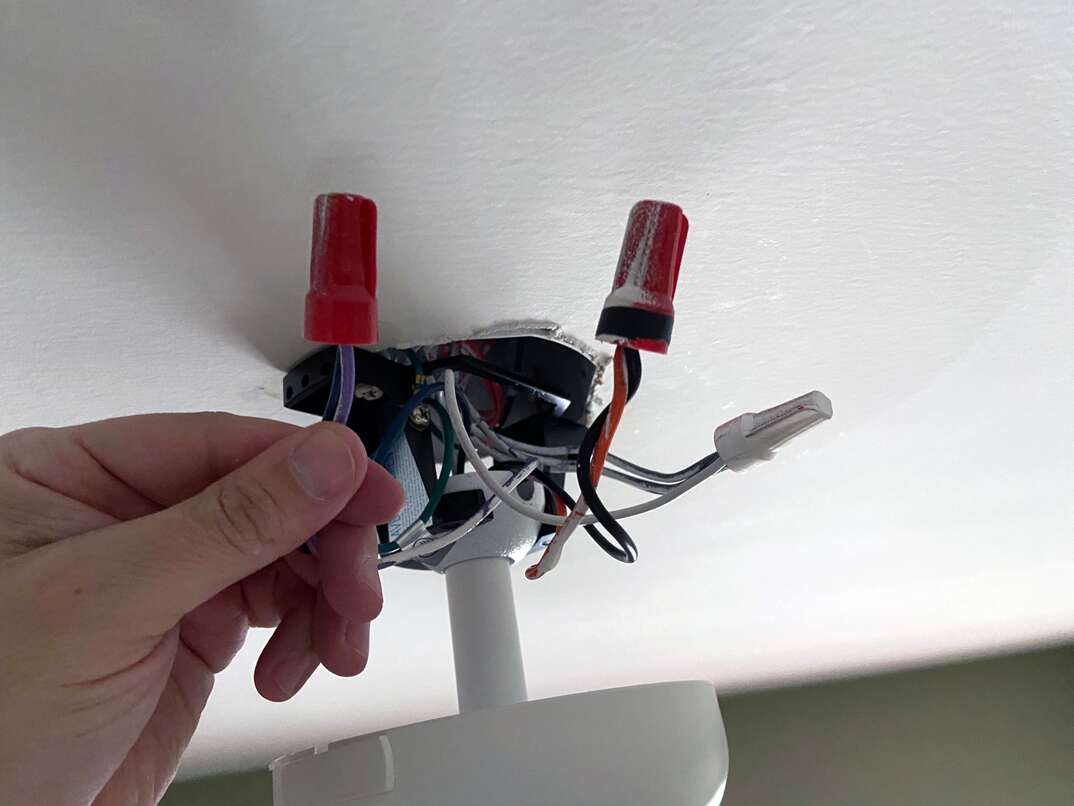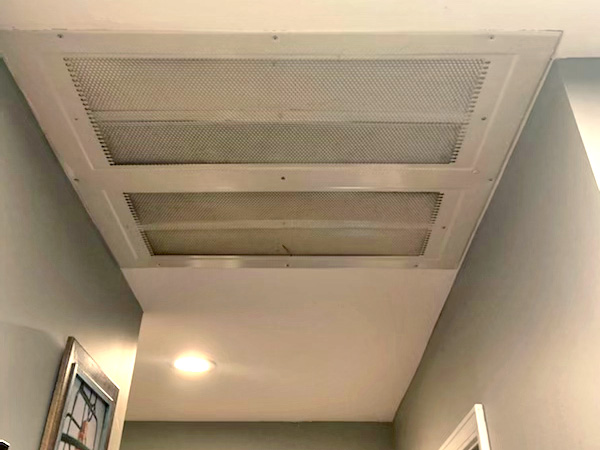How Much Does It Cost to Install a Ceiling Fan?

Ceiling Fan Costs at a Glance
- Ceiling fan cost: $50-$400
- Installation cost: $100-$350
Ceiling fans may not be quite the same as central air conditioning systems in terms of the relief they can provide on scorching hot days, but they can offer a refreshing flow of circulated air for individual rooms. Plus, they’re also much more affordable to install than a complex AC system. You likely won’t need to spend money on anything more than some minor labor and a few parts.
This May Also Interest You: How to Install a Ceiling Fan
Thinking about putting in a ceiling fan? Here’s what you need to know.
Ceiling Fan Costs
The price of putting in a new ceiling fan varies, but according to The Spruce, it usually ranges from $50 to $400. Outdoor ceiling fan models can cost slightly more but also come in a similar price range.
Factors Influencing Cost
Like any household appliance, ceiling fans come in different shapes, sizes, builds and levels of functionality. Some can be made of tougher materials or be more decorative and larger, and others can come with additional design features like a central socket for a light fixture. All of these will factor into a ceiling fan’s price.
On the lower end of the price range, you can get an economical, basic ceiling fan. On the expensive side, you’ll see decorative models made of wood or steel that are large enough to deliver lots of airflow in a large room.
There’s also the expense of installing the fan. The cost of installation may vary depending on whether you have existing wiring where you want to install the fan and whether you hire a professional to take the installation work off your hands.
 -------------------------------------------
-------------------------------------------
Can You Install a Ceiling Fan Yourself?
You can install a ceiling fan yourself for almost no additional cost. To do so successfully, however, you’ll need the right tools. There’s more than a bit of work involved, especially if there's no existing wiring in the spot you want to install it.
To get an idea of what kind of tools and materials this job requires, here’s a basic list:
- Ladder
- Hole saw
- Adjustable wrench
- Drill with Phillips and flat-head bits
- Voltage testing unit
- Retrofitted ceiling fan brace
- Dust masks
- Safety goggles
If you don’t have many of these tools at home already, buying them will raise your DIY ceiling fan installation cost and increase your time investment. Depending on your home’s construction, other tools may also be needed. Furthermore, if your ceiling fan model has lights and the site for your ceiling fan doesn’t have preexisting wiring, you’ll need to run wires to that spot and utilize some basic electrical knowledge to do so safely.
More Related Articles:
- As the Seasons Change, So Should the Direction of Your Ceiling Fan
- Best Outdoor Ceiling Fans
- How to Remove a Ceiling Fan
- What’s the Span of Your Fan? Here’s How to Measure for a Ceiling Fan
- What Size Air Conditioner Do I Need?
 -------------------------------------------
-------------------------------------------
Should You Hire a Professional to Install a Ceiling Fan?
Hiring a professional to do the job for you might actually be the easier option, since a pro brings both tools and experience with them.
If you do hire a professional to install your ceiling fan, they may either be a handyman or an electrician. For most ceiling fan installations, an experienced handyman should suffice. They may be able to call in an electrician if they run into an issue that's beyond their skill level.
The cost of labor and associated materials for professional installation can vary depending on wiring needs and the specific placement of your new fan. For example, if there’s no existing wiring for your fan, adding new wiring will do the most to raise costs. You’re probably going to have to spend anywhere from $100 to $350 for ceiling fan installation.
Why Should You Install a Ceiling Fan?
Ceiling fans are a great way to circulate fresh air through the indoor or outdoor spaces of your home at a low cost. They’re energy-efficient for indoor cooling and nearly essential for cooling open spaces in which AC systems won’t work. If you live in a place that gets hot or humid weather annually, installing a ceiling fan can be a great source of extra comfort.
Since we’re all home now more than ever, being prepared for unexpected home repairs with a plan from HomeServe is important. Having a plan in place gives you peace of mind knowing that you can simply call our 24/7 repair hotline for covered breakdowns. See what plans are available in your neighborhood.


